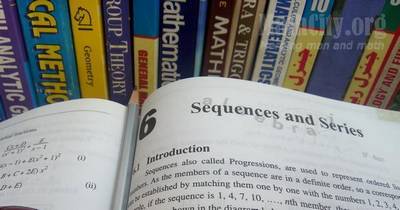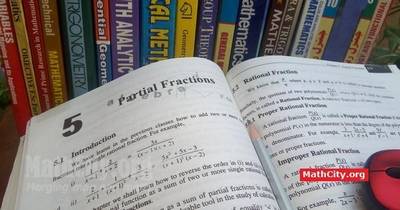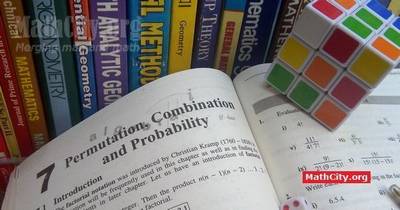Table of Contents
Chapter 06: Sequences and Series
 Notes (Solutions) of Chapter 06: Sequences and Series, Text Book of Algebra and Trigonometry Class XI (Mathematics FSc Part 1 or HSSC-I), Punjab Text Book Board, Lahore.
Notes (Solutions) of Chapter 06: Sequences and Series, Text Book of Algebra and Trigonometry Class XI (Mathematics FSc Part 1 or HSSC-I), Punjab Text Book Board, Lahore.
Contents & summary
- Introduction
- Types of Sequences
- Exercise 6.1
- Arithmetic Progression(A.P)
- Exercise 6.2
- Aritmetic Mean (A.M)
- n Arithmetic Means between two given Numbers
- Exercise 6.3
- Series
- Exercise 6.4
- World Problems on A.P.
- Exercise 6.5
- Geometric Progression(G.P)
- Exercise 6.6
- Geometric Means
- n Geometric Means between two given numbers
- Exercise 6.7
- Sum of n terms of a Geometric Series
- The Infinite Geometric Series
- Exercise 6.8
- World Problems on G.P.
- Exercise 6.9
- Harmonic Progression(H.P)
- Harmonic Means
- n Harmonic Means between two numbers
- Relation between Arithmic, Geometric and Harmonic Means
- Exercise 6.10
- Sigma Notation(or Summation Notation)
- To find the Formulae of Sum
- Exercise 6.11
Some corrected solutions
Exercise 6.2⇒ Question 11(i)
If $l,m,n$ are the $p$th, $q$th, $r$th terms of an A.P., show that $$l(q-r)+m(r-p)+n(p-q)=0$$ Solution: Let $a_1$ be first term and $d$ be common difference of A.P, then $$\begin{align}l=a_1+(p-1)d,\\ m=a_1+(q-1)d,\\ n=a_1+(r-1)d.\end{align}$$ Now $$\begin{align}L.H.S &= l(q-r)+m(r-p)+n(p-q)\\ &= lq-lr+mr-mp+np-nq\\ &=(l-n)q+(m-l)r+(n-m)p\\ &=(a_1+(p-1)d-a_1-(r-1)d)q+( a_1+(q-1)d-a_1-(p-1)d)r\\ &\,\,+(a_1+(r-1)d-a_1-(q-1)d)p\\ &=((p-1)d-(r-1)d)q+( (q-1)d-(p-1)d)r+((r-1)d-(q-1)d)p\\ &=(p-1-r+1)dq+(q-1-p+1)dr+(r-1-q+1)dp\\ &=(p-r)dq+(q-p)dr+(r-q)dp\\ &=[pq-qr+qr-pr+pr-pq]d=(0)d=0=R.H.S\end{align}$$
Exercise 6.4⇒ Question 3(ii)
An equation $3n^2-17n-288=0$ should be $3n^2-17n-228=0$. … suggested by Abdullah Zafar (Garrison Academy Kharian)
Solutions
<callout type=“success” icon=“fa fa-download”>
- Exercise 6.1 | View Online | Download PDF (115KB)
- Exercise 6.2 | View Online | Download PDF (409KB)
- Exercise 6.3 | View Online | Download PDF (123KB) UPD
- Exercise 6.4 | View Online | Download PDF (757KB)
- Exercise 6.5 | View Online | Download PDF (124KB)
- Exercise 6.6 | View Online | Download PDF (332KB)
- Exercise 6.7 | View Online | Download PDF (220KB)
- Exercise 6.8 | View Online | Download PDF (389KB)
- Exercise 6.9 | View Online | Download PDF (115KB)
- Exercise 6.10 by Momin Ali |View Online | Download PDF (560KB)
- Exercise 6.10 |View Online | Download PDF (365KB)
- Exercise 6.11 | View Online | Download PDF (162KB)
</callout>
Question Bank by Prof. Nusni Natasha
<callout type=“success” icon=“fa fa-download”>
- Chapter 06 (Question Bank) | View Online | Download PDF (410KB)
</callout>
Short Questions
The following short questions was send by Mr. Akhtar Abbas. <callout type=“success” icon=“fa fa-download”>
- Chapter 06 | View Online | Download PDF NEW
</callout>
Here are previous and next chapters
 <caption>
Chapter 05: Partial Fractions
</caption>
</thumbnail>
<caption>
Chapter 05: Partial Fractions
</caption>
</thumbnail> <caption>
Chapter 07: Permutation, Combination and Probability
</caption>
</thumbnail>
<caption>
Chapter 07: Permutation, Combination and Probability
</caption>
</thumbnail>